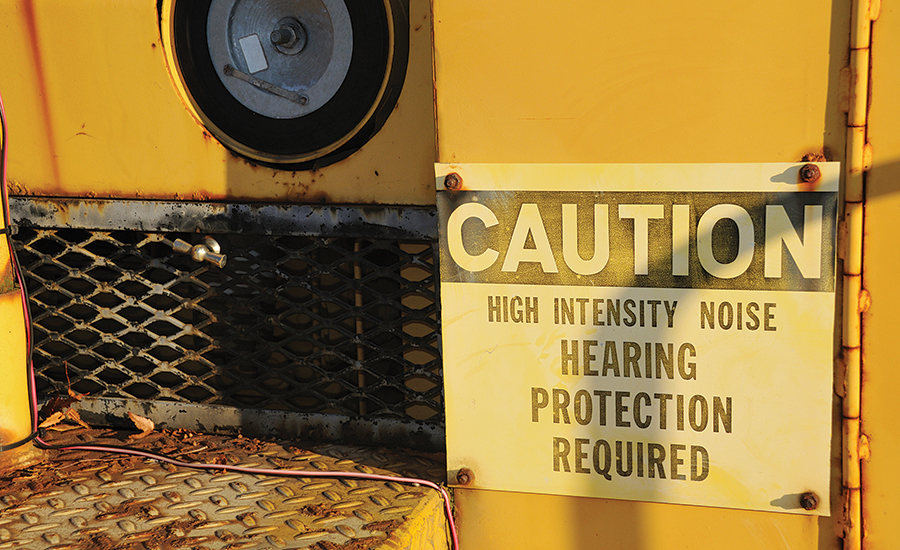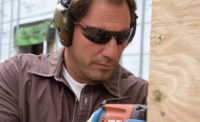Many safety managers provide hearing protectors to their noise-exposed workers with the good intention of stopping noise-induced hearing loss. They may even stock protectors with higher rating numbers, since “the higher the rating, the more the protection” the manager mistakenly believes.
But let’s try a quick quiz. Your facility has continuous noise measuring 100 decibels (dBA)—a hazardous noise level. Your worker wears an earplug with a rating number on the package of 30 dB. How much noise is reaching the eardrum of the worker? If you answer 70 dB, you are probably quite far off.
It’s a question that strikes at the core of hearing conservation efforts, yet most safety professionals have little idea how much protection is obtained by a noise-exposed worker. In fact, very few workers themselves would know how much protection they are achieving. The Noise Reduction Rating (NRR) on the package is intended to estimate the protection level a particular earplug is capable of delivering in idealized laboratory conditions when it is properly fit. But repeated studies show that in the real world of industrial noise, exposed workers sometimes only obtain a fraction of that rating number ... perhaps 5 dB or less, not the 30 dB on the package.
The reasons for this real-world discrepancy are numerous, but with regard to earplugs, they can be summarized into two major culprits: poor fitting technique, such as not inserting the earplug far enough into the ear canal to block noise adequately, or bad selection, such as choosing the wrong earplug that is not a good fit for that particular ear.
Dispelling the myths
Many well-intentioned managers follow best practice in offering hearing protectors and administering audiometric testing to noise-exposed workers. But they are often surprised to find that their efforts simply document the progression of hearing loss, rather than prevent the loss. The following myths underlie many of these false expectations.
Myth 1: Providing hearing protection alone prevents hearing loss.
Many safety managers falsely assume that proper use of hearing protection is fairly intuitive (“just put it in your ear”). They pass out the hearing protection, but provide little or no training in how to use that protection properly, perhaps generously assuming that workers will read the manufacturer’s instructions on the package.
Studies of hearing protector use reveal that when hearing conservation training had been provided by posters or leaflets, less than half of the “trained” workers could recall even basic aspects of the content. But repeated studies show that if that same training is delivered individually, one-on-one or in small groups, the worker’s recall of the content skyrockets, and the worker is significantly more likely to obtain higher levels of protection. Large group training seems to have little effect in proper usage of hearing protection; only individual training can be linked to high attenuation results.
Myth 2: Any earplug in the ear is blocking some noise.
Many safety managers assume anything in the ear canal must be blocking some noise. But acoustic testing proves that a leaky earplug (one that does not seal the ear canal) often provides very little or no protection. This is problematic for a safety manager who is trying to evaluate compliance by visual inspections. He/she might assume that any worker wearing an earplug must be protected to some extent, and focus more on the workers who are wearing no protection at all. But in reality, a poorly-fit earplug may offer no protection, just like the worker with no earplug.
Myth 3: The package rating can be “de-rated” to estimate real-world protection.
Since the NRR was developed, numerous studies have shown that average attenuation achieved in the noisy workplace is sometimes far below the laboratory-generated NRR. This may be due to several critical factors: users in the real world might not receive proper training, or may adjust their protectors for comfort rather than protection. Some users may intentionally compromise their fit in order to optimize their ability to hear co-workers and machine noises more clearly.
Fit-testing and training
Instead of relying upon the laboratory estimates of the NRR, a safety manager can now measure each worker’s protection level on-site. At least five manufacturers currently offer fit-test systems for hearing protection, allowing a safety manager to document exactly how much protection a worker receives with a given earplug. The result is a Personal Attenuation Rating (PAR). But that PAR is specific only to that earplug, that worker and that particular fit.
Benefits of fit-testing of hearing protectors were highlighted in a recent Best Practices Bulletin published by an alliance of regulatory agencies in the U.S. and the National Hearing Conservation Association. The document (available from the website cited below1) endorses fit-testing as a best practice in a hearing conservation program, and cites the major benefits, including employee training, refitting of workers with declining hearing and selecting adequate hearing protectors for specific noise environments.
Various fit-testing systems use different methods to measure real-world protection from an earplug. Some use specially-prepared surrogate earplugs with probe microphones, while others can test any real earplug from any manufacturer. Some systems require a quiet test room, similar to audiometric testing, while others can be performed in any office or lunchroom. But the end result of these fit-test systems is a personalized measure of real-world protection, similar in concept to a respirator fit test.
The value of fit-testing is immediate and powerful. If a worker obtains a low Personal Attenuation Rating (poor fit), hands-on re-instruction and re-fitting can be performed immediately. If re-training with the same earplug fails to improve the Personal Attenuation Rating, then a different earplug can be selected to more closely match the user’s ear canal anatomy.
Conclusion
Noise-induced hearing loss is not the automatic by-product of a noisy workplace. By implementing leading indicators in a Hearing Conservation Program, employers are empowered to prevent noise-induced hearing loss, rather than just documenting it through audiometric testing. Best practices like individual fit-testing provide safety managers with immediate and lasting training tools that allow employers to say with confidence, “We stopped hearing loss in our noisy workplace.”
[1] OSHA/NHCA/NIOSH Alliance (2008). Best Practice Bulletin: Hearing Protection-Emerging Trends: Individual Fit Testing.
http://c.ymcdn.com/sites/www.hearingconservation.org/resource/resmgr/imported/AllianceRecommendationForFitTesting_Final.pdf





